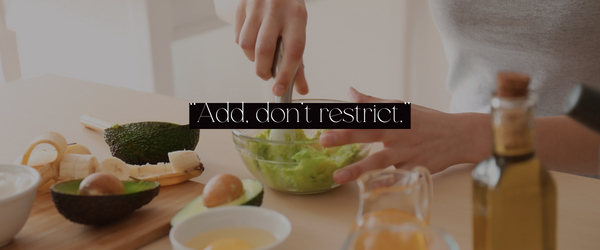10 Ingredients You Should Always Have in Your Kitchen for Low-Glycemic Cooking
Glycemic index (GI) is a scale that ranks a carbohydrate-containing food according to how much it raises blood glucose levels. Foods with a high GI are absorbed quickly into the bloodstream and cause a rapid rise in blood sugar. Low-GI foods, on the other hand, are absorbed more slowly and cause a gradual rise in blood sugar.
How Foods Are Measured On The Glycemic Index
Each food is assigned a number on the glycemic index. The higher the number, the greater the impact of that food on blood sugar levels. Foods with a GI of 70 or more are considered high-GI foods. Those with a GI of 56 or less are considered low-GI foods.
A few examples of high-GI foods include white bread, white rice, pastries, and sugary cereals. Low-GI foods include oats, barley, beans, lentils, and most fruits and vegetables.
The glycemic index is not a perfect measure. It does not take into account the amount of carbohydrate in a food or how that food is prepared, or the other nutrients it contains. However, it can still be a helpful tool, especially for people with diabetes or prediabetes who need to control their blood sugar levels.
If you’re trying to follow a low-glycemic diet, you’ll want to make sure your kitchen is stocked with these 10 ingredients. With them on hand, you’ll be able to whip up healthy, delicious meals in no time!
1. Brown Rice
A pantry staple for many families, brown rice is ideal for low-glycemic cooking. It has a GI of 50, which makes it a great choice for those looking to keep their blood sugar levels in check. Serve it as a side dish or use it in place of white rice in your favorite recipes.
2. Legumes
Legumes are another great ingredient to have on hand for low-glycemic cooking. Legumes include beans, lentils, and peas. They’re packed with fiber and protein, and have a low GI. Add them to soups, stews, or rice dishes for extra nutrition and flavor. They are perfect for those looking to regulate their blood sugar levels. Use them in soups, stews, salads, and more!
3. Oats
Oats are a fantastic source of fiber and have a GI of 55, making them ideal for a low-glycemic breakfast. They’re perfect for breakfast cereal or as an addition to baked goods. All oats are appropriate for low-glycemic cooking, but steel-cut oats are the best choice, since they have a lower GI than rolled oats or quick oats.
4. Sweet Potatoes
Sweet potatoes are not only delicious but also nutritious! Even thought they are called “sweet” potatoes, they actually have a lower glycemic index than other potatoes like reds or yukon golds. They have a GI of 54, making them perfect for those following a low-glycemic diet. Serve them as a side dish or use them in place of regular potatoes in your favorite recipes.
5. Nonfat Greek Yogurt
Greek yogurt is packed with protein and has a lower lactose content than regular yogurt, making it easier to digest. It also has a GI of 11, making it perfect for those following a low-glycemic diet. Use it in smoothies, dips, and sauces or enjoy it as is! You can add berries and stevia to it for a sweet treat that won’t spike your blood sugar the way other types of sugar-laden yogurt will.
6.) Quinoa
Quinoa is one of the most popular grains right now and for good reason! It’s packed with nutrients and has a GI of 53, making it perfect for those following a low-glycemic diet. It’s also high in protein, so it will help you feel satisfied for hours after your meal. Serve it as a side dish or use it in place of rice in your favorite recipes.
7.) Whole Grain Pasta
Whole grain pasta is made with whole wheat flour, which gives it a lower GI than regular pasta made with refined flour. It’s also packed with nutrients and has a delicious flavor that pairs well with all sorts of sauces and dishes. You can find all of your favorite types of pasta in a whole grain variety, whether you like spaghetti, penne, or rotini.
8.) Dark Leafy Greens
Dark leafy greens are loaded with vitamins and minerals and have a negligible GI, making them perfect for those following a low-glycemic diet. Spinach, kale, chard, and collard greens are all great choices. Add them to soups, salads, or sauté them as a side dish. They’re also delicious when wilted and used as a topping for pizza or pasta dishes. You can even add them to smoothies to boost the nutrient content.
9.) Frozen Vegetables
Frozen vegetables are just as nutritious as fresh vegetables but they’re often cheaper and last longer since they’ve been cooked and then frozen at the peak of freshness. Plus, they’re easy to cook with – just pop them in the microwave or oven and you’re good to go! You can also prepare them by adding them to soups, cooking them on the stove-top, or thawing them to use them the same way you would use raw veggies. Broccoli, peas, and carrots are all wonderful frozen vegetables to keep on hand for a variety of meals.
10.) Tomatoes
Tomatoes are one of the most versatile vegetables out there – they can be used in so many different dishes! Plus, they have a GI of 15, making them perfect for those following a low-glycemic diet. Use tomatoes to make your own sauces, so you can avoid the added sugar and other unhealthy ingredients found in store-bought versions.
Eating a low-glycemic diet doesn’t mean you have to eat boring, flavorless food. In fact, these low GI ingredients are loaded with flavor.
If you’re following a low glycemic diet, be sure to stock your kitchen with these ten ingredients . With them on hand, you’ll be able to cook up healthy, delicious meals in no time!
What are your favorite low glycemic ingredients? Share them with us in the comments below!
Photo by Nadine Primeau on Unsplash




